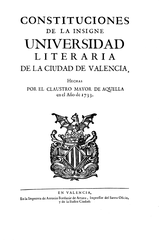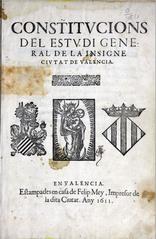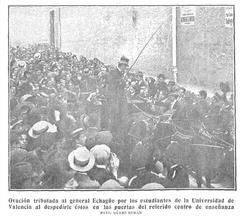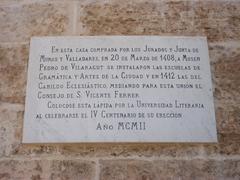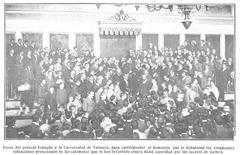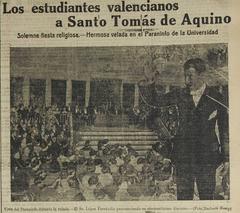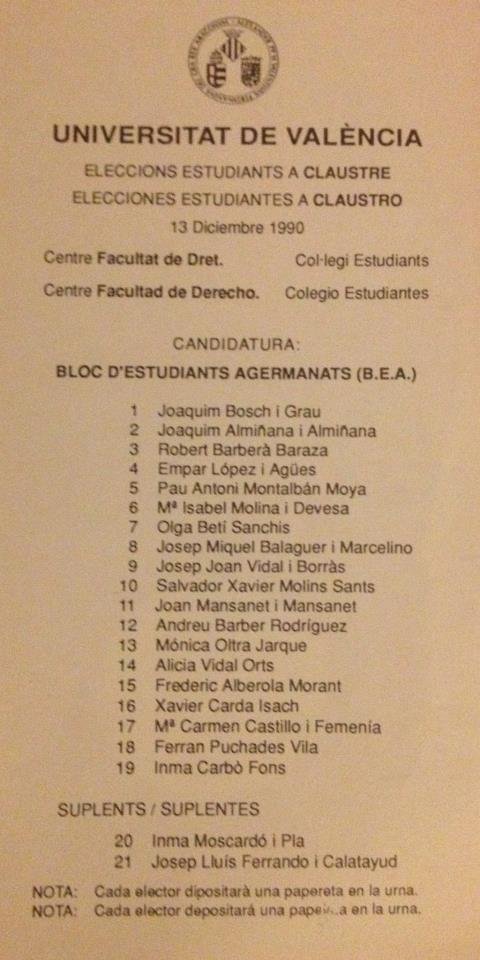
University of Valencia Visiting Hours, Tickets, and Historical Sites Guide
Date: 14/06/2025
Introduction: The University of Valencia and Its Significance
Located in the vibrant city of Valencia, Spain, the University of Valencia (Universitat de València, UV) stands as a symbol of historical depth, academic excellence, and cultural vitality. Established in 1499 with the approval of Pope Alexander VI and King Ferdinand II of Aragon, UV ranks among Spain’s oldest universities. Over more than five centuries, it has played a central role in shaping the intellectual, scientific, and cultural trajectory of the region (University of Valencia Visiting Hours, Tickets, and Historical Insights; Significance and Impact).
The campus is home to architectural masterpieces such as the iconic La Nau building, the historic botanical garden founded in 1567, and the elegant Corpus Christi College. These sites not only reflect Valencia’s Renaissance and Enlightenment heritage but also showcase the university’s ongoing dedication to research, cultural preservation, and community engagement (University of Valencia Visiting Hours, Tickets, and Key Attractions).
This guide offers comprehensive visitor information on opening hours, ticketing, tours, and accessibility to ensure a smooth and enriching experience. Thanks to its central location, the university is easily accessible from major city attractions such as Valencia Cathedral, Central Market, and the Turia Gardens, allowing visitors to combine academic discovery with the city’s vibrant ambiance (Practical Visitor Information).
The university’s role extends beyond academia; it is a leader in sustainable tourism, international partnerships, and cultural exchange, actively participating in initiatives such as the UNWTO Silk Road Programme and collaborating with UNESCO (Significance and Impact).
Whether you are drawn by history, architecture, education, or culture, this guide provides all the essential details for a memorable visit. For the latest updates, always refer to the official University of Valencia website.
Contents
- Introduction to the University of Valencia
- Historical Overview
- Visiting Information: Hours, Tickets, and Accessibility
- Guided Tours and Special Events
- Main Historical and Modern Sites
- Art, Culture, and Community Engagement
- Visitor Experience and Practical Tips
- Integration with Valencia’s Urban Landscape
- International Visitor Highlights
- Practical Information: Getting There, Facilities, and Safety
- FAQs
- Plan Your Visit and Stay Connected
- Sources
Historical Overview
The University of Valencia was founded in 1499, initially focusing on medicine, humanities, theology, and law—disciplines central to Renaissance Spain. Its botanical garden, established in 1567, is among the oldest in Europe, illustrating the university’s commitment to scientific advancement.
Throughout history, the university has left a profound mark on Valencia’s urban and cultural landscape. In the 16th century, its influence contributed to Valencia’s reputation as a “city of convents and monasteries.” Despite challenges such as economic downturns and social upheaval, UV adapted through Enlightenment reforms and continues to thrive as a leading institution.
Visiting the University of Valencia: Essential Information
Visiting Hours
- Historic Buildings & Botanical Garden: Open Monday–Saturday, 9:00 AM–7:00 PM. Hours may change for holidays or special events; consult the official visitor page before your visit.
- La Nau Cultural Centre: Monday–Friday, 10:00 AM–6:00 PM.
- Museums: Tuesday–Sunday, 10:00 AM–5:00 PM.
Tickets and Admission
- General Admission: Most historic sites, including La Nau and the botanical garden, are free to enter.
- Guided Tours/Special Exhibitions: May require tickets (€3–€10). Purchase online or at designated visitor centers.
Accessibility
The university is dedicated to inclusive access:
- Ramps, elevators, and adapted restrooms are available in key buildings.
- Contact visitor services in advance for special accommodations.
Getting There
- Public Transport: Well connected by metro, tram, and bus. Blasco Ibáñez and Tarongers campuses are centrally located.
- By Bicycle: Valencia is bike-friendly; Valenbisi public bikes and campus bike racks are available.
- On Foot: Many sites, including La Nau, are within walking distance of the historic city center.
Nearby Attractions
- Valencia Cathedral
- Mercado Central
- Turia Gardens
- Historic neighborhoods: El Carmen, El Cabanyal
Guided Tours and Special Events
- Guided Tours: Offered in multiple languages, covering architectural highlights, the botanical garden, and the university’s history. Advance booking is recommended, especially during peak seasons.
- Cultural Events: Art exhibitions, concerts, lectures, and festivals are held throughout the year (UV Agenda). Many are open to the public, offering an authentic academic and cultural experience.
Main Historical and Modern Sites
La Nau: The Historic Heart
La Nau, the university’s original building, is renowned for its Gothic-Renaissance architecture and tranquil cloister. Today, it serves as a vibrant cultural center with exhibitions, concerts, and academic ceremonies (Lonely Planet; UV History).
Botanical Garden
Established in 1567, the garden is a Mediterranean haven with hundreds of plant species, shaded paths, and seasonal exhibitions. Open daily for a modest fee; free on select days.
Cerveró Palace
A historical site housing the Institute for the History of Medicine and Science, with exhibitions and academic events.
Modern Campuses
- Blasco Ibáñez: Health sciences and medicine, with advanced research facilities.
- Tarongers: Focuses on law, economics, and social sciences.
- Burjassot-Paterna: Specializes in sciences and engineering.
Art, Culture, and Community Engagement
- Centro Cultural La Nau: Hosts temporary art exhibitions, concerts, and lectures.
- University Museums: Include the Museum of Natural History and Museum of Medical History. Open Tuesday–Sunday with affordable entry.
- Annual Events: The university participates in city festivals like Las Fallas and the Holy Chalice Jubilee Year, offering special tours and open days (Visit Valencia).
Visitor Experience and Practical Tips
- Amenities: Cafes, bookstores, souvenir shops, and free Wi-Fi are available on campus.
- Safety: Security personnel maintain a safe environment. Respect academic activities, especially during exams.
- Best Photo Spots: La Nau’s cloister, the botanical garden, and panoramic city views from the observatory.
- Language: Tours and materials are available in English, Spanish, and Valencian.
- Accommodation: University halls and nearby hotels offer options for visitors, especially in summer.
Integration with Valencia’s Urban Landscape
The university’s main sites are near major attractions such as Plaza de la Virgen and the UNESCO-listed Silk Exchange (PlanetWare). Collaborations with local museums and cultural institutions enrich the visitor experience (Visit Valencia). UV’s sustainability initiatives align with Valencia’s European Green Capital status (Visit Valencia).
Noteworthy Experiences for International Visitors
- Student-Led Tours: Open days feature student ambassadors sharing their campus experiences (University Living).
- Cultural Integration: Workshops and language support are available for international guests (StandYou).
- Academic Exchange: The university welcomes international scholars and students year-round (EduJourney).
Practical Information
Opening Hours and Tickets
- La Nau and Botanical Garden: 10:00 AM–8:00 PM (check official website for updates).
- Most sites free; some events/exhibitions require tickets.
Getting There
- Metro (lines 3, 5), tram (lines 4, 6), and EMT bus lines.
- Valenbisi bike-sharing and walkable access from the city center.
Accessibility
- Ramps, elevators, and adapted restrooms in most buildings.
Visitor Facilities
- Maps, brochures, and assistance at information points.
- Free Wi-Fi and public restrooms in major buildings.
Safety
- Valencia is a safe city, but remain vigilant in crowded areas (My Path in the World).
Frequently Asked Questions (FAQs)
Q: What are the visiting hours?
A: Most sites are open Monday–Saturday, 9:00 AM–7:00 PM, with variations. Always check the official website.
Q: Do I need tickets?
A: General admission is usually free. Some exhibitions and events require tickets, available online or onsite.
Q: Are guided tours available in English?
A: Yes, advance booking is recommended.
Q: Is the university accessible?
A: Yes, most buildings are adapted for visitors with reduced mobility.
Q: What are nearby attractions?
A: Valencia Cathedral, Mercado Central, Turia Gardens, and historic neighborhoods.
Plan Your Visit and Stay Connected
For official updates, event calendars, and comprehensive visitor information, visit the University of Valencia website.
Download the Audiala app for guided tours, interactive maps, and real-time updates. Follow UV and Audiala on social media for insider tips and special offers.
Summary
The University of Valencia represents a harmonious blend of historical legacy, academic innovation, and cultural life. Iconic landmarks like La Nau, the botanical garden, and Cerveró Palace offer a window into Valencia’s rich past and dynamic present. With free admission to most sites, accessible facilities, and a prime location, UV is a must-see for anyone interested in Spanish culture and history. Plan your journey to immerse yourself in a living institution that bridges Valencia’s illustrious history with its forward-thinking future (University of Valencia Visiting Hours, Tickets, and Historical Insights; University of Valencia Visiting Hours, Tickets, and Key Attractions; Practical Visitor Information; Significance and Impact).
Sources
- University of Valencia Visiting Hours, Tickets, and Historical Insights
- Significance and Impact
- University of Valencia Visiting Hours, Tickets, and Key Attractions
- Practical Visitor Information
- Significance and Impact - Silk Road and UNWTO Initiatives

